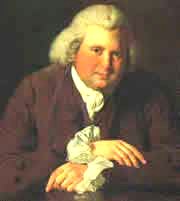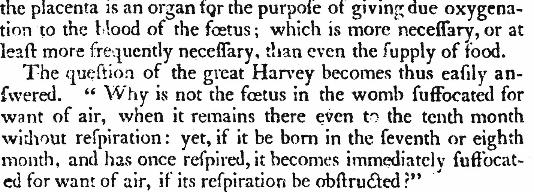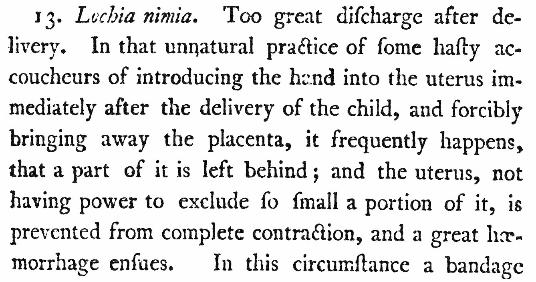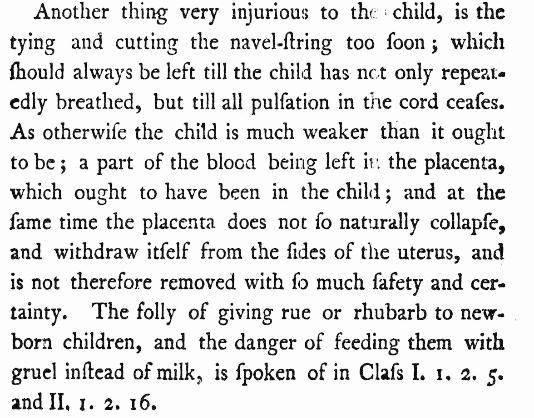
"The placenta is an organ for the purpose of
giving due oxygenation to the blood of the
fetus; which is more necessary, or at least
more frequently necessary, than even the
supply of food."
giving due oxygenation to the blood of the
fetus; which is more necessary, or at least
more frequently necessary, than even the
supply of food."
Erasmus Darwin (1796) Zoonomia; or, The Laws of
Organic Life, Vol 1, Section XXXVIII. New York: T&J
Swords, Faculty of Physic of Columbia College, p350.
Online, via Harvard University Hollis Catalog, from The
American Antiquarian Society/ NewsBank, Early American
Imprints, Series 1(1639-1800).
Organic Life, Vol 1, Section XXXVIII. New York: T&J
Swords, Faculty of Physic of Columbia College, p350.
Online, via Harvard University Hollis Catalog, from The
American Antiquarian Society/ NewsBank, Early American
Imprints, Series 1(1639-1800).
Erasmus Darwin 1731-1802
The respiratory function of the placenta
Erasmus Darwin, (Charles Darwin’s grandfather) described the placenta as the
respiratory organ of the fetus. He was thus able to provide an answer to a
question posed by William Harvey:
Erasmus Darwin, (Charles Darwin’s grandfather) described the placenta as the
respiratory organ of the fetus. He was thus able to provide an answer to a
question posed by William Harvey:
- "Why is not the foetus in the womb suffocated for want of air, when it
remains there even to the tenth month without respiration: yet, if it be
born in the seventh or eighth month, and has once respired, it becomes
immediately suffocated for want of air, if its respiration be obstructed."

From vol 1, Section XXXVIII, 1796, p350
|
|

From vol 1, Part second. Vol. I[-II], 1797, p235 -- The most famous quote on tying
the navel-string too soon.
the navel-string too soon.
|
